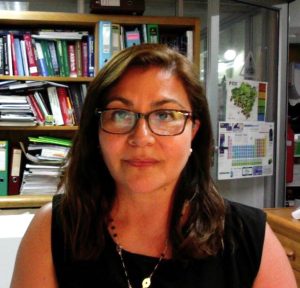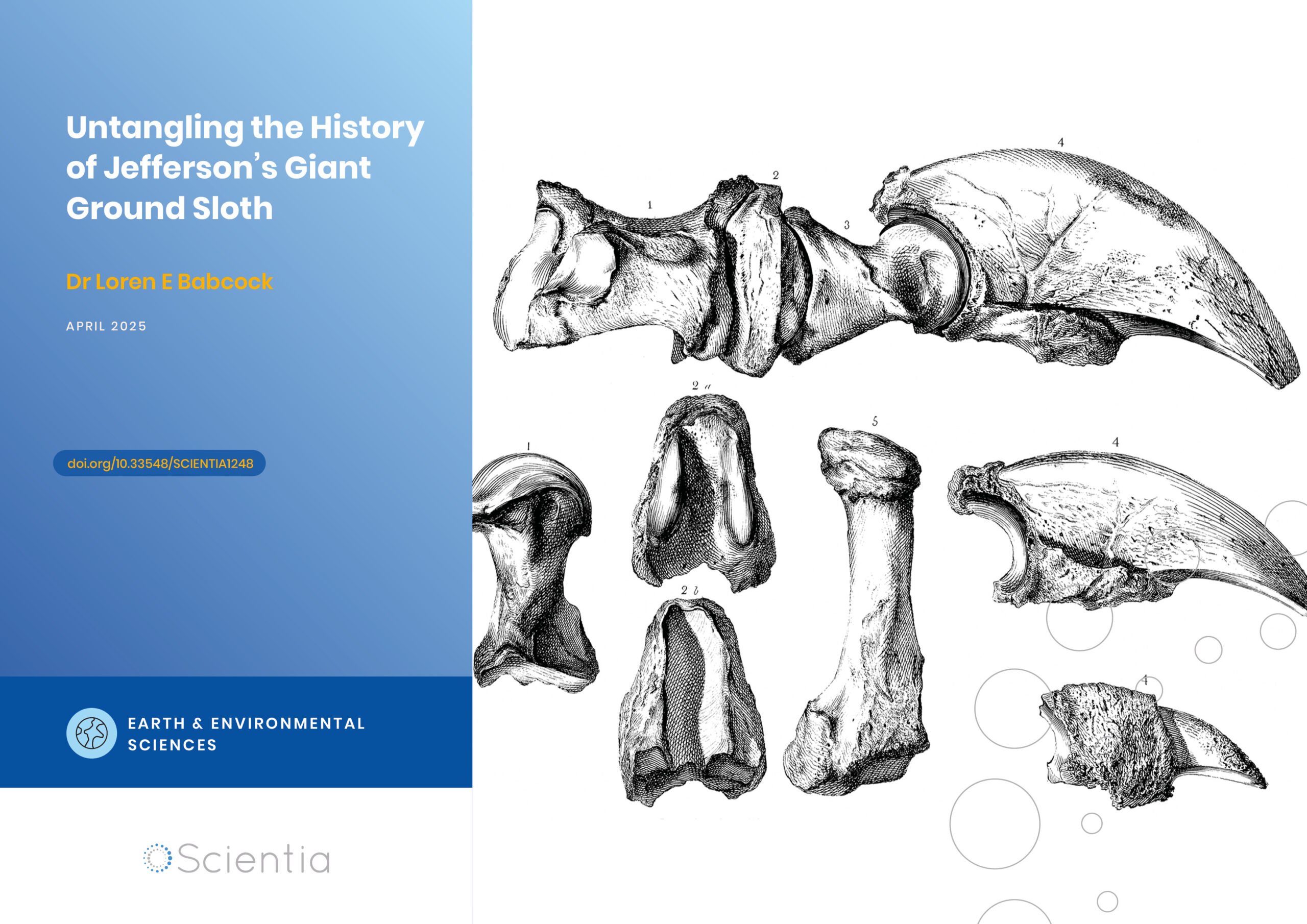Dr Marcos Caroli Rezende | Dr Carolina Aliaga Vidal – Enhancing Science Education Through Visual Chemistry
Chemical scientists are vital to numerous important areas of society – from pharmaceutical drug development to solar energy conversion. To prepare for their future careers, it is critical for chemistry students to gain a deep understanding of complex molecular processes. However, chemistry is full of abstract concepts that can be difficult to grasp, causing many students to fall behind. To address this issue, Dr Marcos Caroli Rezende and Dr Carolina Aliaga Vidal at Universidad de Santiago de Chile have been developing visual learning methods to improve the quality of chemistry education, and ensure better outcomes for all students. In their recent work, they have focused on helping students to visualise a complex chemical process known as phase-transfer catalysis.
Education Through Visualisation
Anyone who has sat through a long chemistry lecture will tell you that understanding complex chemical processes is no small undertaking. Like many scientific disciplines, chemistry involves abstract concepts that must be understood before anything else fits into place. Grasping such abstract concepts can be a challenge for students, especially those with a greater affinity for visual learning methods. This can leave many students confused, resulting in higher rates of dropout.
Practical experiments in the laboratory aim to help students develop a better understanding of the abstract concepts they learn in the classroom. Unfortunately, although some experiments involve processes that are easy to conceptualise, many do not. As a result, students may simply follow the practical steps outlined in their instructions, without understanding the underlying chemical processes that are taking place. This can lead to a disconnect, where students do not fully understand the relationship between the steps they take in an experiment, and the chemistry happening in the background.
Because of this, there has been a push to develop visual methods of teaching chemistry. Such methods would allow more students to grasp abstract chemistry concepts, particularly visual learners. In turn, this would ensure greater inclusivity in chemistry education, allowing all students to reach their full potential. As chemistry graduates are needed in a range of important fields – from vaccine development to forensics – achieving greater inclusivity will help to meet the growing demand for skilled chemical scientists.
Towards this aim, Dr Marcos Caroli Rezende and Dr Carolina Aliaga Vidal at Universidad de Santiago de Chile have been developing visual learning methods for chemistry students, and investigating their effectiveness in achieving better educational outcomes. Their focus is to demonstrate how complex chemical processes can be visualised, so that students can gain a deeper understanding of how they work at a molecular level.

Understanding Phase-Transfer Catalysis
As part of their efforts, Dr Caroli Rezende and Dr Aliaga Vidal developed a strategy to help students to grasp the mechanisms involved in phase-transfer catalysis. In this process, a molecule acting as a catalyst transports one or more reactants from one phase, such as water, into another phase, such as oil, where the reaction occurs and the product is formed. As the phase-transfer catalyst is a key factor in allowing chemical reactants to cross the phase boundary, it is therefore an integral part of the reaction.
Phase-transfer catalysts have been used across various industries for almost half a century, where they facilitate the synthesis of various pharmaceutical drugs, agricultural chemicals and soaps. They have also been used in wastewater treatment and remediation of environmental pollutants. Because of the widespread applications of phase-transfer catalysis, it is important that students understand the mechanisms that drive this process, to prepare them for their future careers.
Visualising the Catalytic Process
Usually, when phase-transfer catalysis is taught, there is an emphasis on the reaction that is being catalysed, rather than the catalyst itself. This makes sense from a manufacturing standpoint, as there are many different important reactions that use catalysts to synthesise valuable chemical products. In this sense, the catalyst is just a means to an end; it is a tool that allows the chemist to achieve a reaction and synthesise a product cleanly and in high yield.
However, this outlook can cause difficulty when teaching undergraduate students about catalytic reactions. By focusing on the reaction and not the catalyst itself, some students will fail to fully understand the role of the catalyst in the chemical reaction. ‘The actual catalysis is not directly observed, but only inferred by the student,’ explains Dr Aliaga Vidal. On top of this, the concepts involved in phase-transfer catalytic reactions are abstract and can therefore be difficult to conceptualise.
Dr Caroli Rezende and Dr Aliaga Vidal decided to tackle this problem from the opposite direction. Instead of focusing on the conversion of reactants into a product, they set up an experiment that allows the student to visualise the stages that the catalyst itself goes through.
They achieved this by using a cation as a catalyst that can also form a ‘charge-transfer complex’ when paired with an anion. Though the cation and anion are colourless when apart, they form a coloured complex when paired in solution. Dr Aliaga Vidal and Dr Caroli Rezende chose this type of phase-transfer catalyst for its colour-changing ability, as students would be able to monitor the colour change as the reaction progressed, and determine the state of the catalyst at each stage in the reaction.
The team then designed an experiment involving the reaction of 3-bromo-1-propene and potassium xanthate to produce a chemical called O-ethyl-S-2-propenyldithiocarbonate, as an example of a common organic transformation called a nucleophilic substitution reaction. The phase-transfer catalyst they chose was a pyridinium salt, which is capable of forming a charge-transfer complex with the xanthate anion. They conducted the reaction in a flask containing two immiscible solvents, water and dichloromethane. As water is the less dense liquid, it sits on top of dichloromethane, forming two separate phases.

Introducing Students to the Experiment
To test the effectiveness of their designed experiment, the team then conducted practical classes with second-year chemistry undergraduates at the University of Santiago de Chile. Before the students began the experiment, they were given a short lecture explaining what will happen to the catalyst at each stage in the reaction. These abstract concepts would then be explored visually during the experiment.
Then, in the laboratory, the students began by dissolving potassium xanthate in water and adding dichloromethane. At this stage, both the water and dichloromethane phases were colourless. However, when the students added the catalyst, something interesting occurred. Xanthate ions interacted with the pyridinium catalyst, forming a yellow charge-transfer complex that could move from the water phase into the dichloromethane phase. As a result, the dichloromethane layer had become yellow, while the water layer on top remained colourless.
Once the students had formed the yellow complex, they could then move on to the next stage. They added the next reactant – 3-bromo-1-propene – to the mixture, and watched the flask as the yellow colour disappeared. The return to a colourless state indicated that xanthate had reacted with 3-bromo-1-propene in the dichloromethane phase to form O-ethyl-S-2-propenyldithiocarbonate, and that the catalyst had returned to its original state.
The key point here is that the colour changes observed were due to the disappearance of the charge-transfer complex, as the xanthate anion was consumed in the reaction. While the students could infer what was happening in terms of the reaction, they could actually visualise the catalyst moving across the two phases and, as the colour changed, how the transferred xanthate anion was consumed, giving a much better indication of how the mechanism worked in one cycle.
The whole process and the colour change could be repeated by simply shaking the mixture and allowing the two phases to separate again. The students could thus notice that the catalytic process was a sequence of small steps that were repeated until all of the chemical reactants were consumed.
Alongside their visual observations, the students also monitored the reaction using UV-vis spectroscopy, which they used to measure the presence and amount of the yellow charge-transfer complex. Once the experiment was complete, they could identify the product that they had synthesised in a rather pure state by employing another spectroscopic technique, called nuclear magnetic resonance.

Student Feedback
Once the practical classes were complete, Dr Caroli Rezende and Dr Aliaga Vidal wished to assess the educational benefit of their visual approach to chemistry education. To do so, they asked each of the students to complete a questionnaire to evaluate their experience of the experiment.
The responses were overwhelmingly positive, with 100% of students strongly agreeing that the experiment had enabled them to understand phase-transfer catalysis, and that visualisation had helped them to easily understand abstract concepts. On top of this, the majority of students agreed that they could make connections between what they had learned in the lab and other types of chemical reactions.
These results undeniably demonstrate the great success of the laboratory class designed by Dr Aliaga Vidal and Dr Caroli Rezende. The team hopes that their visual approach will be adopted by chemistry teachers in other universities, towards achieving better outcomes for their students. By making chemistry more accessible for visual learners, such teaching approaches could enable more students to graduate with chemistry degrees, towards fulfilling the demand for graduates in this important field.
Beyond improving chemistry education, Dr Caroli Rezende is also keen to relate chemistry with many aspects of the wider world. ‘Science teaching should help students understand and become more critical of the world in which they live,’ he explains. ‘As an example, phase-transfer catalysis can be regarded as a chemist’s trick to bypass a natural boundary. These continuous, small-scale processes are found everywhere. They ensure that – for better and for worse – we all live in one global world, where isolating frontiers prove ineffective in the long run.’
Reference
https://doi.org/10.33548/SCIENTIA692
Meet the researchers

Dr Carolina Aliaga Vidal
Facultad de Química y Biología
Universidad de Santiago de Chile
Santiago
Chile
Dr Carolina Aliaga Vidal earned both her master’s degree and PhD from the University of Chile in 1995 and 2000, respectively. After this, she went on to work as a postdoctoral researcher at the University of Ottawa from 2001 to 2004. Today, she works as a Professor at the Universidad de Santiago de Chile, where her research focuses a variety of spin and fluorescent probes to monitor hydrogen-transfer reactions. Dr Aliaga Vidal is also a research fellow of the Centre of Nanoscience and Nanotechnology, and the Chilean Agency for Science and Technology.
CONTACT
E: carolina.aliaga@usach.cl
W: https://www.quimicaybiologia.usach.cl/academico/aliaga-vidal-carolina

Dr Marcos Caroli Rezende
Facultad de Química y Biología
Universidad de Santiago de Chile
Santiago
Chile
Dr Marcos Caroli Rezende completed his BSc and MSc at the Universidade Federal do Rio de Janeiro and Universidade Federal de Santa Catarina, respectively, before moving to the UK to complete his PhD at the University of East Anglia. He then returned to Universidade Federal de Santa Catarina where he worked as a professor, before moving to the Universidad de Santiago de Chile, where he holds his current position. Dr Caroli Rezende has contributed to over 180 papers in peer-review journals, ranging in topic from organic synthesis and mechanisms, all the way to developing chemical dyes and sensors.
CONTACT
E: marcos.caroli@usach.cl
W: https://www.quimicaybiologia.usach.cl/academico/caroli-rezende-marcos
KEY COLLABORATORS
German Barriga, Universidad Metropolitana de Ciencias de la Educación
Matías Vidal, Universidad de Santiago de Chile
FUNDING
Fondecyt projects 1140212 and 1190045
USACH-DICYT grant USA2055
FURTHER READING
MC Rezende, C Aliaga, G Barriga, M Vidal, Visualization of Phase-Transfer Catalysis through Charge-Transfer Complexes, Journal of Chemical Education 2018, 95, 1631.
MC Rezende, I Ponce, R Oñate, I Almodovar, C Aliaga, Change of Mechanism with a Change of Substituents for the Zincke Reaction, Tetrahedron Letters 2014, 55, 3097.

Want to republish our articles?
We encourage all formats of sharing and republishing of our articles. Whether you want to host on your website, publication or blog, we welcome this. Find out more
Creative Commons Licence
(CC BY 4.0)
This work is licensed under a Creative Commons Attribution 4.0 International License. 
What does this mean?
Share: You can copy and redistribute the material in any medium or format
Adapt: You can change, and build upon the material for any purpose, even commercially.
Credit: You must give appropriate credit, provide a link to the license, and indicate if changes were made.
More articles you may like
Calculating Steering Friction: Essential Engineering for Military Aircraft Safety
The safe operation of military training aircraft depends on precise engineering calculations that most of us never consider. Dr Bogdan Adrian Nicolin and Dr Ilie Nicolin from the National Institute for Aerospace Research in Romania have developed sophisticated methods to calculate the steering friction moment in military aircraft. This critical engineering parameter ensures that pilots can safely control aircraft during taxiing, take-off, and landing – making their work essential for both pilot training and flight safety.
Professor Robert B Heimann | Culinary Craftmanship: The Evolution of Pottery for Cooking
Cooking food is arguably one of the most important transitions in human evolution, and initiated hundreds of thousands of years of refinement in both technique and technology. Professor Emeritus Robert B Heimann of TU Bergakademie Freiberg, Germany, recently reviewed the evidence for early cooking vessels and tracks the evolution of their production, identifying important strategies of optimisation using various natural materials, firing methods, and designs to improve durability, functionality, and efficiency over time.
Dr Loren Babcock | Untangling the History of Jefferson’s Giant Ground Sloth
In the spring of 1796, workers mining saltpetre in a western Virginia cave unearthed several unusual bones. This would launch the scientific study of extinct animals in North America and connect one of America’s founding fathers to the early development of palaeontology. Some of these mysterious bones eventually made their way to future US President Thomas Jefferson at his Monticello estate. Dr Loren Babcock from The Ohio State University’s School of Earth Sciences has conducted an extensive review of the complex naming history of this iconic extinct animal. His research untangles over 200 years of inconsistent scientific terminology and establishes the definitive nomenclatural history of what would become known as Megalonyx jeffersonii.
Epigenetic Mysteries Unravelled: The Zinc-Finger Proteins
Exploring the complex mechanisms of cell development processes and DNA structure is critical to understanding how certain diseases, such as cancer, can arise. Professor Danny Reinberg and Dr Havva Ortabozkoyun from the University of Miami in Florida, USA, work to reveal the epigenetic mechanisms at play during cell division and development and, in turn, disease processes. Together, they are discovering new protein molecules involved in genome organisation, deepening our understanding of how cancers and other related conditions can develop.




